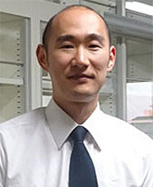Droplet Digital™ PCR–Based Assay Quickly and Cost-Effectively Assesses Genome-Editing Events


Hercules, CA — June 28, 2016 — Researchers have developed a cost-effective and rapid method for assessing edits generated by CRISPR-Cas9 and other genome-editing technologies. The assay strategy, which was recently published in Scientific Reports, can be used to better understand and improve the function of gene-editing technologies.
Using Bio-Rad’s Droplet Digital PCR (ddPCR™) technology, researchers at the Gladstone Institutes and the Digital Biology Group at Bio-Rad Laboratories, Inc. were able to detect editing events at frequencies as low as one in 1,000 copies of the genome. Achieving this level of sensitivity allowed the researchers to examine how experimental conditions impact genome-editing outcomes. Scientists can use this assay strategy to optimize their experiments for increased effectiveness in their genome-editing protocols.
Current Challenges in Measuring Genome-Editing Outcomes
A number of methods exist for detecting genome-editing events, although each has drawbacks. High resolution melt analysis has limited sensitivity and quantitative ability, while next-generation sequencing is laborious and often cost-prohibitive. In addition, many methods for measuring genome-editing outcomes monitor only the random non-homologous end joining (NHEJ) edits and neglect to monitor the precise homology-directed repair (HDR) edits. What’s needed is a method that can measure both types of repairs effectively and simultaneously.
“There had been no quick and easy method to monitor HDR and NHEJ at the same time,” said Dr. Yuichiro Miyaoka, the study’s lead author. Dr. Miyaoka conducted the research while he was at Gladstone. He is now a project leader for the Regenerative Medicine Project at the Tokyo Metropolitan Institute of Medical Science.
Ultrasensitive Quantification of Genome Editing Events Using ddPCR
Bio-Rad’s ddPCR technology is well suited for the challenge of detecting rare events such as NHEJ and HDR edits by massively partitioning samples into thousands of droplets, effectively increasing the signal-to-noise ratio of a rare target DNA in the reaction.
For this study, the researchers used fluorescently labeled probes that bound the target DNA to create unique fluorescence signatures indicating if HDR, NHEJ, or no editing occurred at the chosen DNA site. The assay has a detection limit of <0.05% for HDR edits, and as low as 0.1% for NHEJ. The method also provides quicker results than next-gen sequencing.
“Once you have a validated assay, you can go from sample to answer for dozens of experiments in a day,” said Dr. Jennifer Berman, co-first author on the study and a Digital Biology Group staff scientist.
Gene-Editing Outcomes Depend Greatly on Experimental Conditions
Most genome-editing conditions induce more NHEJ than HDR, but this study found some conditions that induce more HDR than NHEJ. The findings demonstrate that the HDR- and NHEJ-inducing activities are context dependent, and the ddPCR assay strategy is very powerful for monitoring genome-editing outcomes.
“We are interested in exploring the therapeutic potential of genome editing but needed to better understand the factors that impact its effectiveness,” said senior author Dr. Bruce R. Conklin, a senior investigator at Gladstone and a Professor of Medicine at the University of California, San Francisco.
Unexpectedly, the researchers found that genome-editing outcomes depended greatly on experimental conditions, including the nuclease, cell type, and gene target.
“Our results indicate that researchers have to carefully screen for the best conditions to achieve the desired outcomes for their application,” said Dr. Miyaoka.
A Growing Application for ddPCR
In addition to the Conklin laboratory, many other researchers have begun to use ddPCR for gene-edit detection, as well as for evaluating the molecular consequences of editing cells in living organisms.
Recent research from Duke University and collaborators established genome editing as a potential therapy to treat Duchenne’s muscular dystrophy (DMD). The researchers used the CRISPR-Cas9 system to remove a mutation in the dystrophin gene from a mouse model of DMD. Using ddPCR, they were able to detect precise edits from muscle lysate and quantify messenger RNA of the in vivo–edited dystrophin gene. The result was an improvement of muscle function in mice containing the desired gene edit.
Other research published in Nature Protocols from the laboratory of Dr. Boris Fehse addresses a current bottleneck for researchers using gene-editing tools in quantifying gene knockout rates. This work describes a ddPCR method for simultaneously detecting wild-type and NHEJ event frequencies with a new technique they termed gene-editing frequency digital PCR (GEF-dPCR).
“Exact quantification of gene-editing frequencies is particularly important in translational medicine, but has so far been limited by the lack of suitable, straightforward methods,” said Dr. Fehse, Professor for Cell and Gene Therapy in Hamburg (Germany). “The new dPCR-based techniques now facilitate precise and sensitive assessment of gene editing even on precious in-vivo samples from preclinical and clinical studies.”
About Bio-Rad
Bio-Rad Laboratories, Inc. (NYSE: BIO and BIOb) develops, manufactures, and markets a broad range of innovative products and solutions for the life science research and clinical diagnostic markets. The company is renowned for its commitment to quality and customer service among university and research institutions, hospitals, public health and commercial laboratories, as well as the biotechnology, pharmaceutical, and food safety industries. Founded in 1952, Bio-Rad is based in Hercules, California, and serves more than 100,000 research and healthcare industry customers through its global network of operations. The company employs more than 7,800 people worldwide and had revenues exceeding $2 billion in 2015. For more information, please visit www.bio-rad.com.
Bio-Rad Forward-Looking Statements
This release may be deemed to contain certain forward-looking statements within the meaning of the Private Securities Litigation Reform Act of 1995. These forward-looking statements include, without limitation, statements we make regarding the value of Droplet Digital PCR technology in clinical settings and our development and launch of new products. Forward-looking statements generally can be identified by the use of forward-looking terminology such as, “believe,” “expect,” “anticipate,” “may,” “will,” “intend,” “estimate,” “continue,” or similar expressions or the negative of those terms or expressions, although not all forward-looking statements contain these words. Such statements involve risks and uncertainties, which could cause actual results to vary materially from those expressed in or indicated by the forward-looking statements. These risks and uncertainties include our ability to develop and market new or improved products, our ability to compete effectively, international legal and regulatory risks, and product quality and liability issues. For further information regarding our risks and uncertainties, please refer to the “Risk Factors” and “Management’s Discussion and Analysis of Financial Condition and Results of Operation” in Bio-Rad’s public reports filed with the Securities and Exchange Commission, including our Annual Report on Form 10-K for the fiscal year ended December 31, 2015 and our Quarterly Report on Form 10-Q for the fiscal quarter ended March 31, 2016. Bio-Rad cautions you not to place undue reliance on forward-looking statements, which reflect an analysis only and speak only as of the date hereof. We disclaim any obligation to update these forward-looking statements.
For more information contact:
Viresh Patel
Bio-Rad Laboratories, Inc.
925-474-8602
viresh_patel@bio-rad.com
Ken Li
Chempetitive Group
312-532-4675
kli@chempetitive.com
